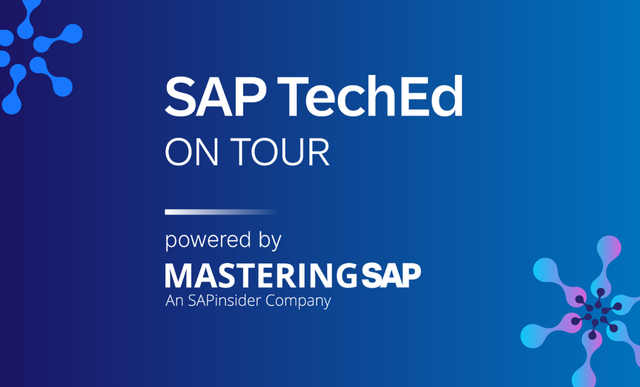SAP Workforce Planning
Filter By
Browse By
- SAP Analytics and AI
- SAP Application Development and Integration
- All SAP Application Development and Integration
- SAP ABAP
- SAP ABAP Development Tools
- SAP ABAP Test Cockpit
- SAP API Management
- SAP BAPI
- SAP Basis
- SAP BRF
- SAP Business Application Studio
- SAP CMS
- SAP Design Studio
- SAP Development Tools
- SAP DevOps
- SAP EAI
- SAP EDI
- SAP Extension Suite
- SAP Fiori
- SAP Fiori Elements
- SAP Integration Suite
- SAP Low Code Application Development
- SAP Low Code Automation
- SAP Netweaver
- SAP Release Management
- SAP UI5
- SAP Web Application Server
- SAP Web IDE
- SAP Business Process Management
- SAP Center of Excellence
- SAP CIO
- SAP Customer Experience
- SAP Data and Data Management
- All SAP Data and Data Management
- SAP BW
- SAP BW/4HANA
- SAP Crystal Reporting
- SAP Data Archiving
- SAP Data Center
- SAP Data Governance
- SAP Data Integration
- SAP Data Migration
- SAP Data Quality
- SAP Data Services
- SAP Data Strategy
- SAP Data Visualization
- SAP Data Warehouse Cloud
- SAP DMS
- SAP Document Control
- SAP EIM
- SAP ETL
- SAP ETL Tools
- SAP HANA
- SAP HANA Administration
- SAP HANA Deployment Infrastructure
- SAP HANA Studio
- SAP Master Data
- SAP Master Data Governance
- SAP MDM
- SAP Enterprise Architect
- SAP Enterprise Asset Management
- SAP ERP
- SAP Finance
- All SAP Finance
- SAP Accounting
- SAP AR AP
- SAP Asset Accounting
- SAP Billing Systems
- SAP BPC
- SAP BRIM
- SAP Cash Management
- SAP Central Finance
- SAP Controlling
- SAP COPA
- SAP Cost Center Accounting
- SAP e-invoicing
- SAP FICO
- SAP Finance Automation
- SAP Financial Closing Cockpit
- SAP Financial Consolidation
- SAP Financial Planning
- SAP FX Risk
- SAP General Ledger
- SAP Global Tax Management
- SAP Hyperion
- SAP Order to Cash
- SAP Payment Processing
- SAP Profitability Analysis
- SAP Rebate Management
- SAP S/4HANA Finance
- SAP Universal Journal
- SAP Governance Risk and Compliance
- SAP Human Capital Management
- SAP Intelligent Technologies
- SAP Platform and Technology
- All SAP Platform and Technology
- SAP Business Technology Platform
- SAP Cloud Connector
- SAP Cloud Integration Platform
- SAP Cloud Migration
- SAP Cloud Platform
- SAP Cloud Providers
- SAP Cloud Strategy
- SAP Container Platform
- SAP Digital Asset Management
- SAP Digital Integration Hub
- SAP Digital Signature
- SAP HANA Enterprise Cloud
- SAP HEC
- SAP Hyperscalers
- SAP Infrastructure
- SAP Messaging
- SAP Smart Forms
- SAP Quality and Testing
- SAP Security
- SAP Spend Management
- SAP Supply Chain Management
- All SAP Supply Chain Management
- SAP APO
- SAP Asset Management
- SAP Business Network
- SAP Digital Manufacturing Cloud
- SAP Digital Twin
- SAP EWM
- SAP IBP
- SAP Inventory Management
- SAP Label Printing
- SAP Logistics
- SAP Manufacturing
- SAP Manufacturing Automation
- SAP MES
- SAP MII
- SAP MM
- SAP MRO
- SAP MRP
- SAP Order Management
- SAP Plant Maintenance
- SAP PLM
- SAP Production Planning
- SAP S&OP
- SAP SD
- SAP SPM
- SAP Supply Chain Planning
- SAP Track and Trace
- SAP Transportation Management
- SAP System Administration
What Is SAP Workforce Planning?
Companies that want to better anticipate staffing needs — be they through organizational change, growth, or seasonal impact — use workforce planning. The process of workforce planning brings a data-driven approach to forecasting workforce requirements and strives to ensure a company is optimizing its hiring and training. Technology also plays a role in workforce planning, and SAP Workforce Planning is offered in the cloud-based SAP SuccessFactors Workforce Planning module.
Good workforce planning typically includes analysis of the following:
- Available talent
- Forecasted talent needs
- Gaps between what is forecasted and what is available
- Determination of how to fill talent gaps.
Filling talent gaps goes beyond simply hiring full-time workers. It can also include part-time or seasonal labor or contract work. The solution to workforce deficits may be inside the company already and achieved through training and promotion from within.
SAP Workforce Planning with SAP SuccessFactors Workforce Planning is one option for SAP customers, but it’s not the only option available. For example, vendors such as Alight offer pre-packaged workforce planning solutions. SAP partners like IBM and Accenture help companies implement workforce planning processes and technologies.
What Is SAP Workforce Planning?
Companies that want to better anticipate staffing needs — be they through organizational change, growth, or seasonal impact — use workforce planning. The process of workforce planning brings a data-driven approach to forecasting workforce requirements and strives to ensure a company is optimizing its hiring and training. Technology also plays a role in workforce planning, and SAP Workforce Planning is offered in the cloud-based SAP SuccessFactors Workforce Planning module.
Good workforce planning typically includes analysis of the following:
- Available talent
- Forecasted talent needs
- Gaps between what is forecasted and what is available
- Determination of how to fill talent gaps.
Filling talent gaps goes beyond simply hiring full-time workers. It can also include part-time or seasonal labor or contract work. The solution to workforce deficits may be inside the company already and achieved through training and promotion from within.
SAP Workforce Planning with SAP SuccessFactors Workforce Planning is one option for SAP customers, but it’s not the only option available. For example, vendors such as Alight offer pre-packaged workforce planning solutions. SAP partners like IBM and Accenture help companies implement workforce planning processes and technologies.
Key Considerations for SAP Workforce Planning
- Data-driven workforce planning is still a strategic advantage. While it may seem like every company is engaging in HR best practices that include workforce planning, the truth is workforce planning and analytics tools are among the lowest adoption of HR software types, according to data from our recent HR technology research. Implementing a workforce planning process can give your organization a competitive edge.
- Bring HR together with finance and the business for workforce planning. Workforce planning is at its best when all relevant sources of insight and information are brought to the table. Finance can provide critical data on budget and forecasted company performance. Business executives drive the direction of the organization that will ultimately create staffing needs. Combine business and finance with HR’s insight for the best workforce planning outcomes.
- Define your workforce planning requirements. Determining the goals of your workforce planning program before undertaking the actual analysis will help drive more effective results. Figure out which departments and skill sets are most likely to need planning assistance. Additionally, identify specific time frames for planning — are you looking at the next year or beyond?
1311 results
-

Empowering Mid-Market Organizations with SAP SuccessFactors® and Rizing
Reading time: 3 mins
As mid-market organizations drive economic growth, they are increasingly leveraging AI, automation, and cloud-based HR solutions to effectively manage complex HR processes, enhance employee experiences, ensure compliance, and support their scaling needs.
-

Selective Data Transition vs. Full Migration: Choosing the Right Approach for SAP S/4HANA
Reading time: 17 mins
Migrating from SAP ECC to SAP S/4HANA involves choosing between Selective Data Transition, which allows for flexible and tailored data migration, and Full Migration, which fully integrates existing systems but requires significant reconfiguration, with specific strategies and thorough preparations critical for successful execution.
-

Master APO Requirements Strategies
Published: 01/January/2006
Reading time: 24 mins
Does your manufacturing requirement strategy in APO match your business plan? Find out how to determine if it does and adjust it if it doesn’t. Key Concept Advanced Planner and Optimizer (APO) requirements strategies determine not only whether a product is manufactured based on a make-to-stock or make-to-order principle. They also determine how existing product...…
-
-

How to Leverage Collaborative Demand Planning with APO
Published: 19/August/2014
Reading time: 20 mins
Discover how to leverage, configure, and execute the business requirement of collaborative demand planning using SAP Advanced Planning and Optimization (APO). Find out how to use the collaborative demand planning functionality of APO for a consensus demand forecast. Key Concept Collaborative demand planning is an agreement between business partners on demand quantity for a specific...…
-

Make Your System More Available to Users with Key Figure Locking
Published: 15/February/2009
Reading time: 15 mins
Learn about the different locking options you can use in a planning area to eliminate the problem of locked data selections. See how you can share data with other users at the same time. Key Concept Locking prevents two or more users from accessing and changing data for the same selection at the same time....…
-

Uncover New Insight into Your Customers with mySAP CRM Analytics
Published: 15/August/2006
Reading time: 27 mins
Find out how mySAP CRM Analytics, a group of tools offered with mySAP CRM 2005 and SAP NetWeaver Business Intelligence to help you optimize your customer data. Learn about the mySAP CRM extraction mechanism and cross-application analysis tools you can use with your data. Then, explore the standard tool sets available, including customer analytics, product...…
-

Improve Runs for Products with Recurring Time Constraints Using SAP APO SNP
Published: 25/February/2011
Reading time: 13 mins
You can configure the SAP Advanced Planning & Optimization (SAP APO) Supply Network Planning (SNP) module to create a real-time shop floor plan based on production frequency. This approach is useful if a company has dedicated manufacturing lines and manufacturing weeks in a month for different product groups, and wants to generate the production plan...…
-
-

Maximize the Capabilities of Enhanced Product Planning and Planner Home Page Functionalities in SAP SCM 7
Published: 30/June/2015
Reading time: 26 mins
Learn steps to configure Enhanced Product Planning (EPP) and Planner Home Page (PHP) functionalities in SAP SCM 7 enhancement package 3. The PHP provides a performance overview of key products in the business user’s or planner’s portfolio through the use of the demand planning (DP), supply network planning (SNP) and production planning and detailed scheduling...…
-

How Implementing SAP Cash Management Helps in Monitoring Your Working Capital
Published: 11/December/2014
Reading time: 35 mins
Learn how to connect the basic SAP order-to-cash and purchase-to-pay cycles in SAP Cash Management to manage your organization’s working capital. This working capital is further efficiently used by connecting SAP Treasury and Risk Management and SAP In-House Cash to SAP Cash Management. Key Concept SAP Cash Management is a sub-component of SAP Financial Supply...…
-

Meet Demand-Driven Scheduling Requirements with SAP ERP and SAP APO: Q&A on When to Use Which for Enhanced Supply and Production Planning
Published: 01/May/2016
Reading time: 31 mins
SAP ERP and the production planning and detailed scheduling (PP/DS) and supply network planning (SNP) components of SAP Advanced Planning and Optimization (SAP APO) offer functionality that can be utilized in a variety of design options to optimize production plans and provide greater visibility into your inventory management, but when do you use which? Especially…
Featured Experts
Become a Member
Unlimited access to thousands of resources for SAP-specific expertise that can only be found here.
Upcoming Events
-

SAP TechEd on Tour, powered by Mastering SAP
November 12 - 14, 2025
Sydney, New South Wales
Australia
View Event
Related Vendors
Your request has been successfully sent


